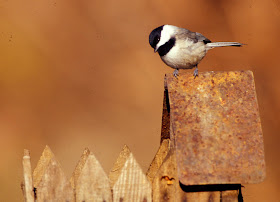The leaves have dropped and thanksgiving is almost upon us, a time to give thanks for the bountiful food we are blessed to have access to. This is the time of year when food is abundant for wild creatures, particularly birds. The sunflower seed is ripe and dry, the flowers and grasses are done flowering and have set seed and those seeds are ready for consumption. The fruits and berries of viburnums, hawthorns, dogwoods, and other species are abundant are ready for the bird feeding table. Soon these sources of food will dwindle and the time of plenty will become a time of scarcity (particularly in late February and March). For those that feed birds, and lots of people do feed birds (about a million of us in Kentucky), now is the beginning of the feeding season. For most folks, feeding involves nothing more than going down to the local hardware or general merchandise store and purchasing a bag of wild bird food. There is certainly nothing wrong with this, but the buyer should be aware of what they are getting in the bag of food. Look at the seed tag and you will discover, quite often, lots of "filler" seeds - wheat, oats, corn, and milo. While not inherently bad, some birds do like this type of seed, you will find you get more bang for your buck by mixing your own, or by simply feeding one or two of the best or preferred seeds. The number one seed eaten and preferred by more birds than any other is the small black oil type sunflower. There really is no reason to feed anything else because finches, even gold finches, will eat it and ground feeders like mourning doves, juncos, and sparrows relish it as well. Cardinals will eat it as do titmice, chickadees, and nuthatches. Even woodpeckers will eat these seeds. If you are making a mix, the best mix would be black oil sunflower and white proso millet. Nothing else would be required as these two seeds would attract pretty much any species to a backyard feeder. If you want to get fancy, you can add the larger striped sunflower seed and safflower (more expensive). Finally, you can put out some suet for the woodpeckers and niger (some folks call it thistle but it really is not a thistle) for the finches. Once you have selected the food, where do you put it to keep it dry? There are more different designs for feeders than you can even dream up but it doesn't need to be fancy and a tray on the ground or placed on a post will do just fine. If you have certain fuzzy tailed rodents that climb trees, and yes you know what I am talking about, then you can get fancy but I can tell you this, at some point in time, the squirrel will outwit you even with a squirrel proof feeder. But that is a whole different subject to be tackled later. So for now, run down the your local feed store and buy 50 lbs. of black oil sunflower and let the birds have a thanksgiving feast as well.
Note the sparrow is picking out the black oil sunflower. In addition there is some milo filler seed in this mix, which was thrown on the ground.
This red-bellied woodpecker is getting some sunflower seed that has been stuffed into small holes in the trunk of this osage orange tree.



No comments:
Post a Comment